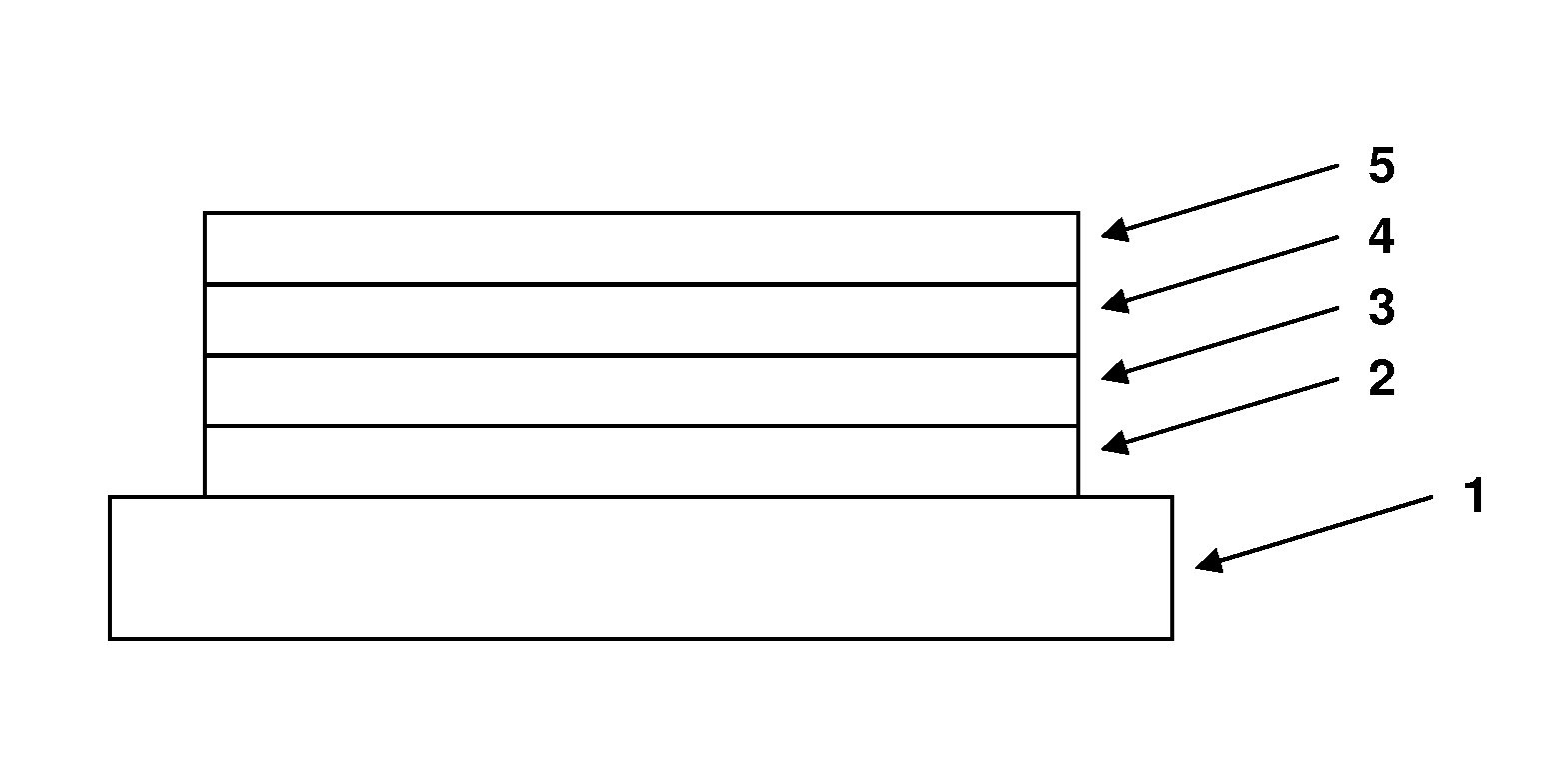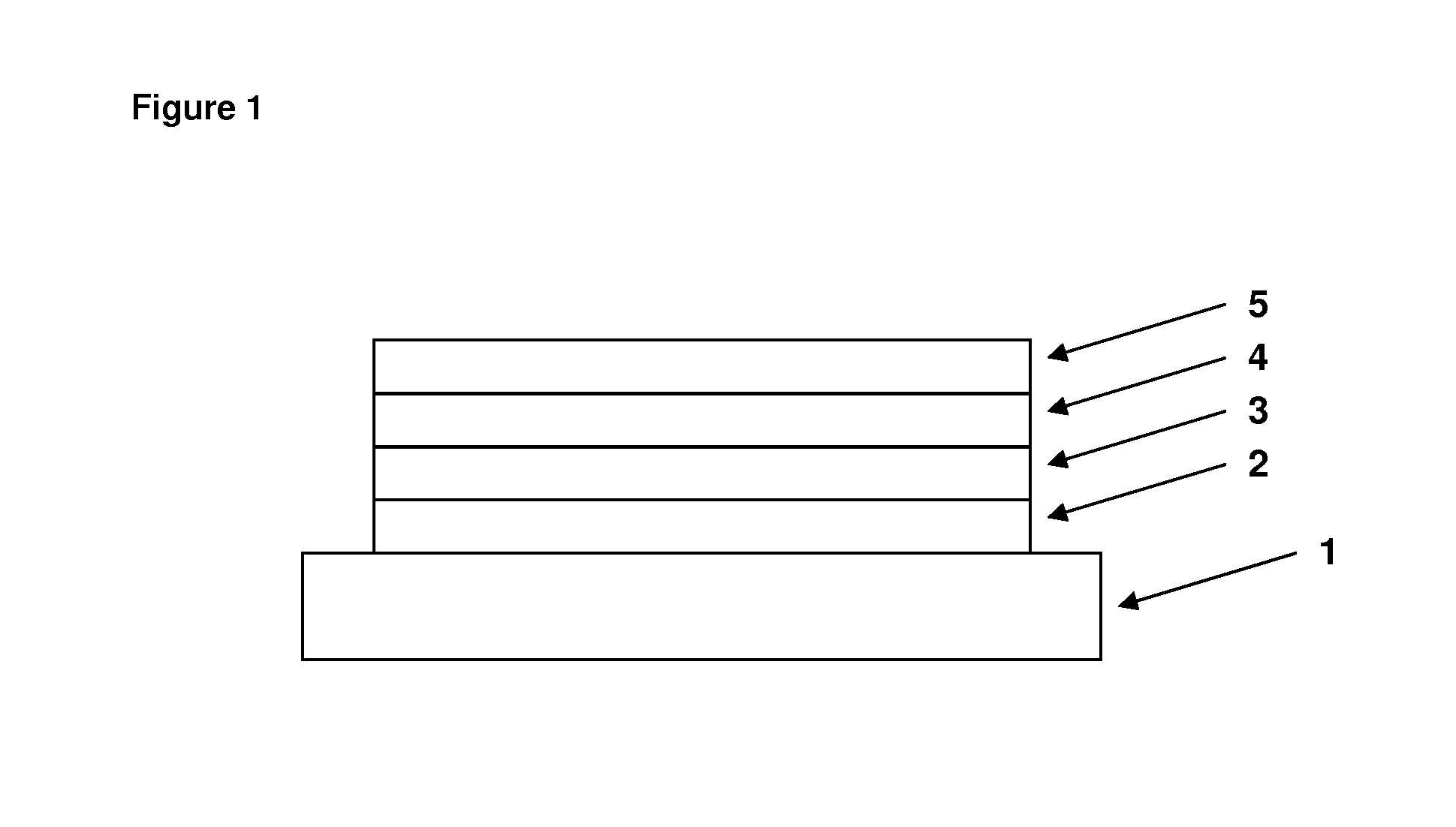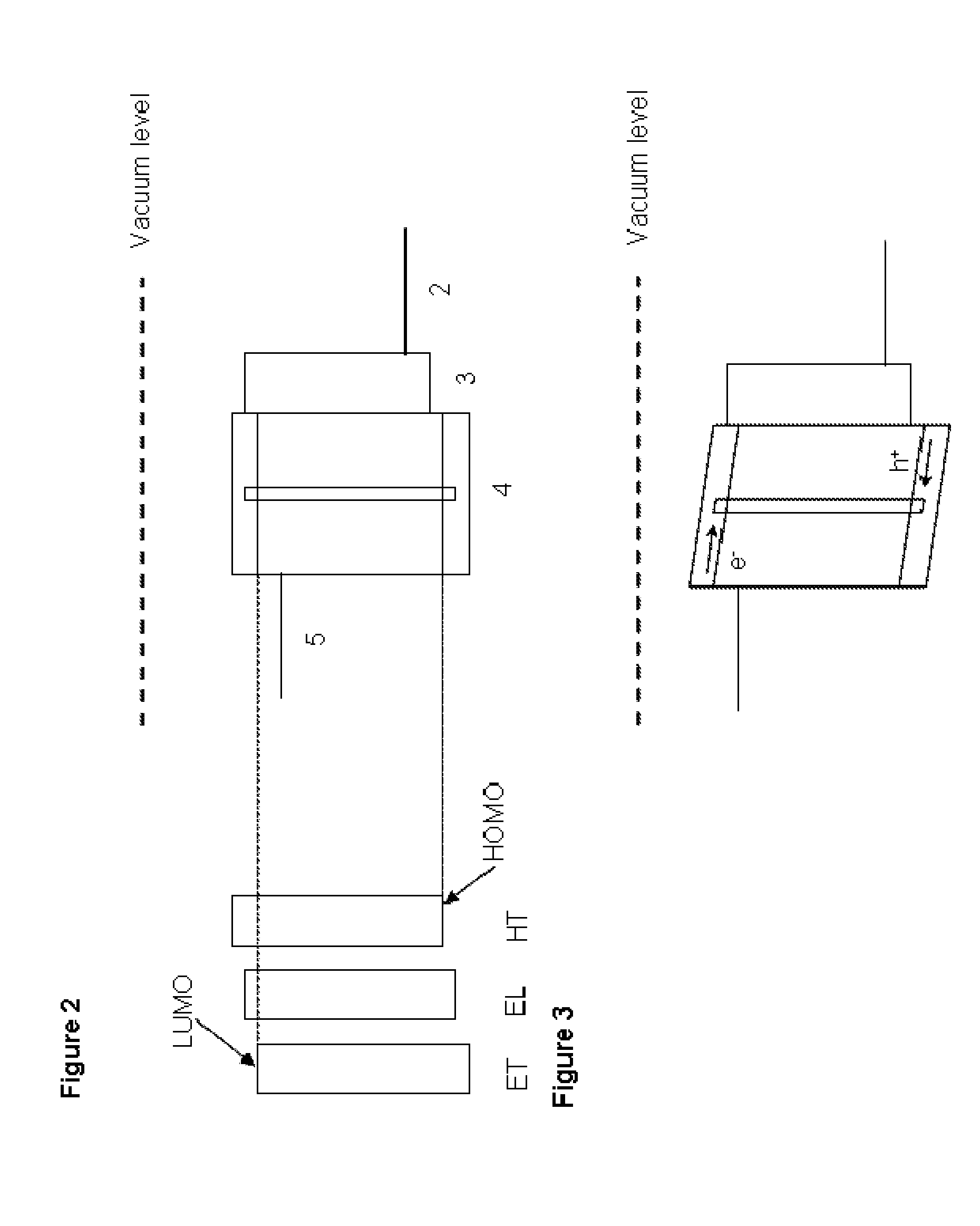Organic Electroluminescent Device and Method of Fabrication
a technology of electroluminescent devices and materials, applied in the direction of discharge tubes/lamp details, discharge tubes luminescent screens, coatings, etc., can solve problems such as poor device performan
- Summary
- Abstract
- Description
- Claims
- Application Information
AI Technical Summary
Benefits of technology
Problems solved by technology
Method used
Image
Examples
example 1
[0122]Onto a layer of glass provided with indium tin oxide (ITO) was deposited a layer of hole injection material available from Plextronics, Inc. as Plexcore®. A 20 nm thick hole transporting electroluminescent layer was formed by depositing from solution a mixture of a polymer comprising a fluorene repeat unit and an arylamine repeat unit, and an electron trapping phosphorescent material. A 70 nm thick electroluminescent electron transporting layer was formed by depositing from solution a white-emitting polymer comprising fluorene repeat units, green and blue fluorescent emitting repeat units and a phosphorescent red emitting end-capping unit as described in GB 0801227.0. A cathode was formed by depositing a layer of sodium fluoride to a thickness of 5 nm and a capping layer of aluminium.
[0123]In Example 1, the orange-red emission from the electron trapping electroluminescent material combines with the white emission from the electron transporting layer to provide an improved whit...
PUM
 Login to View More
Login to View More Abstract
Description
Claims
Application Information
 Login to View More
Login to View More - R&D
- Intellectual Property
- Life Sciences
- Materials
- Tech Scout
- Unparalleled Data Quality
- Higher Quality Content
- 60% Fewer Hallucinations
Browse by: Latest US Patents, China's latest patents, Technical Efficacy Thesaurus, Application Domain, Technology Topic, Popular Technical Reports.
© 2025 PatSnap. All rights reserved.Legal|Privacy policy|Modern Slavery Act Transparency Statement|Sitemap|About US| Contact US: help@patsnap.com



